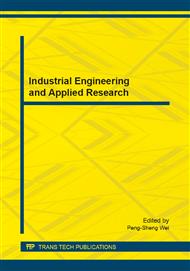p.183
p.187
p.192
p.199
p.205
p.210
p.214
p.219
p.223
Study on Stability of the High Rock Slope under the Flood Discharge Atomization and Rainfall
Abstract:
The stability of high rock slopes under the flood discharge atomization and rainfall is an in-negligible problem especially for the hydropower station with high head during the flood discharge. According to the complicated geological conditions of a high rock slope with the flood discharge problem in China, the method of the saturated-unsaturated unsteady seepage if used, thus the finite element model for the high rock slope in the downstream of the power station is set up. Based on the model, the distribution regularities of the unsteady seepage field of the rock slope is studied under the different discharge atomization and rainfall intensity. Moreover, based on the theory of continuous-discontinuous deformation, the finite element model is set up to analyze the stability of the slope, thus the deformation law of slopes under the flood discharge atomization and rainfall is studied and the safety of the slope is evaluated, and what's more, the engineering measures for improve the stability of the stability of the slope is put forward.
Info:
Periodical:
Pages:
205-209
Citation:
Online since:
August 2014
Authors:
Price:
Сopyright:
© 2014 Trans Tech Publications Ltd. All Rights Reserved
Share:
Citation:


